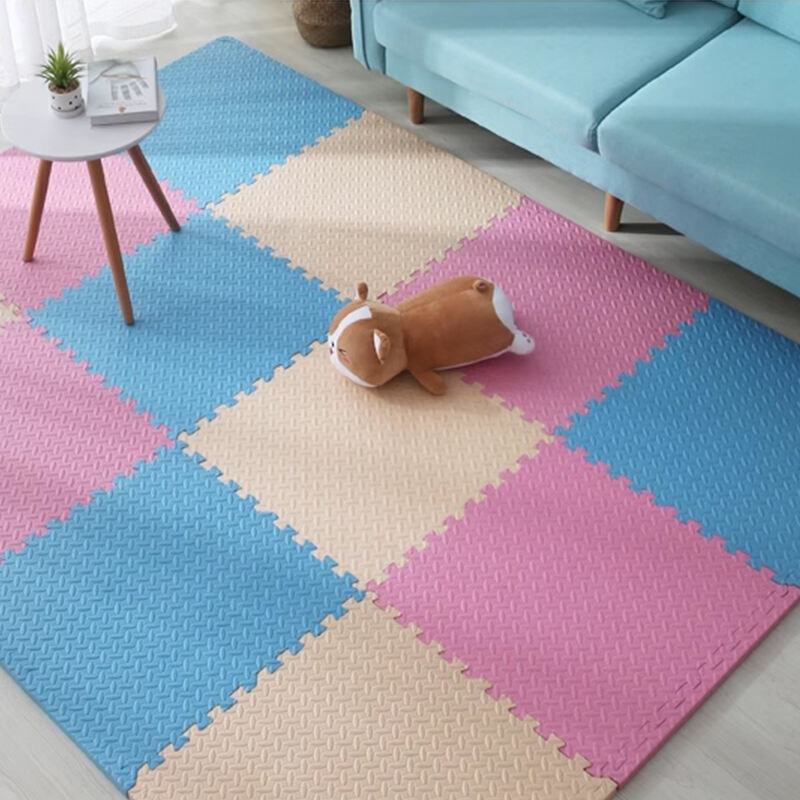Understanding EVA Materials in Modern Children's Products
The safety and quality of children's toys and infant products have always been paramount concerns for parents and manufacturers alike. At the forefront of safe, non-toxic materials stands EVA (Ethylene-Vinyl Acetate), a remarkable polymer that has revolutionized the toy and infant product industry. This versatile material combines safety, durability, and versatility, making it an ideal choice for products that come into direct contact with children.
EVA's popularity in children's products stems from its unique properties - soft yet resilient, waterproof yet lightweight, and most importantly, non-toxic and safe for little ones. As we delve deeper into the world of EVA in toys and infant products, we'll explore how this material has become an industry standard and why parents worldwide trust products made with this innovative material.
Core Properties and Benefits of EVA Materials
Physical Characteristics That Make EVA Ideal for Children
EVA possesses several distinctive physical properties that make it perfectly suited for children's products. The material offers excellent shock absorption capabilities, crucial for protecting children during play. Its soft, cushiony texture prevents injuries while maintaining structural integrity. Furthermore, EVA's lightweight nature ensures that toys and products remain easily manageable for small hands.
The material's closed-cell foam structure provides exceptional insulation properties and water resistance. This makes EVA in toys particularly valuable for bath toys, pool accessories, and outdoor play items. The non-porous surface prevents water absorption and bacterial growth, ensuring long-lasting safety and hygiene.
Safety Standards and Non-Toxic Properties
When it comes to children's products, safety certification is non-negotiable. EVA consistently meets and exceeds international safety standards for toys and infant products. The material is free from harmful substances like BPA, phthalates, and heavy metals, making it safe for children who may put toys in their mouths.
The non-toxic nature of EVA extends beyond its chemical composition. The material is hypoallergenic, reducing the risk of allergic reactions in sensitive children. Its smooth surface is easy to clean and sanitize, helping maintain a healthy play environment.

Applications in Modern Toy Manufacturing
Educational Toys and Learning Materials
Educational toy manufacturers increasingly turn to EVA for creating engaging learning materials. From alphabet puzzle mats to building blocks, EVA in toys provides the perfect balance of safety and functionality. The material's versatility allows for vibrant colors and precise molding, creating visually appealing educational tools that capture children's attention.
The durability of EVA ensures that educational toys maintain their shape and appearance even with frequent use. This longevity makes EVA-based educational products cost-effective for both households and educational institutions, while their lightweight nature facilitates easy storage and transportation.
Outdoor and Active Play Equipment
In the realm of outdoor play, EVA proves invaluable for manufacturing safe, weather-resistant toys. Playground equipment components, sports toys, and climbing accessories benefit from EVA's shock-absorbing properties and durability. The material's resistance to UV radiation and weather elements ensures that outdoor toys remain safe and functional throughout extended periods of outdoor use.
Active play products utilizing EVA provide the perfect combination of safety and excitement. From protective gear to play mats, the material's cushioning properties help prevent injuries while encouraging physical activity and exploration.
EVA in Infant Care Products
Nursery and Bedroom Safety Items
The nursery environment demands the highest safety standards, and EVA delivers excellently in this domain. Corner guards, edge protectors, and safety mats made from EVA provide crucial protection for mobile infants and toddlers. The material's soft texture prevents injuries from accidental impacts while maintaining its protective properties over time.
EVA's application in nursery products extends to floor mats, play areas, and climbing frames. These items create safe spaces for infant exploration and development while giving parents peace of mind about their children's safety.
Teething and Early Development Products
During the crucial teething phase, EVA proves to be an excellent material for manufacturing safe, soothing teething toys. Its soft yet durable nature provides appropriate resistance for developing gums while being gentle enough to prevent discomfort. The material's non-toxic properties are particularly important during this phase when infants frequently mouth objects.
Early development products incorporating EVA help create engaging sensory experiences for infants. From textured toys to squeeze balls, these products support motor skill development while maintaining the highest safety standards.
Manufacturing and Quality Control
Production Standards and Compliance
The manufacturing of EVA toys and infant products follows strict quality control protocols. Each stage of production undergoes rigorous testing to ensure compliance with international safety standards. From raw material selection to final product testing, manufacturers implement comprehensive quality assurance measures.
Production facilities maintain controlled environments to prevent contamination and ensure consistent product quality. Regular testing for harmful substances and structural integrity helps maintain the high safety standards associated with EVA products.
Innovation in Manufacturing Processes
Continuous advancement in EVA manufacturing technology leads to improved product quality and enhanced safety features. Modern production techniques allow for more precise control over material density, flexibility, and durability. These innovations result in products that better serve their intended purposes while maintaining optimal safety levels.
Sustainable manufacturing practices are increasingly integrated into EVA production, reducing environmental impact while maintaining product quality. This focus on sustainability adds another layer of value to EVA-based children's products.
Frequently Asked Questions
Is EVA Safe for Babies to Chew On?
EVA is considered safe for oral contact and is commonly used in teething toys. The material is non-toxic, BPA-free, and meets strict safety standards for infant products. However, always ensure you purchase from reputable manufacturers and check for appropriate age recommendations.
How Long Do EVA Toys Typically Last?
With proper care, EVA toys can last several years. The material is highly durable and resistant to wear and tear. However, regularly inspect toys for signs of damage and replace them if they show significant wear to maintain safety standards.
What's the Best Way to Clean EVA Toys?
EVA toys are easy to clean with mild soap and water. Simply wipe them down with a damp cloth or sponge, and air dry completely before use. Avoid harsh chemicals that might compromise the material's integrity. For thorough sanitization, you can use child-safe disinfectant solutions specifically designed for toys.







